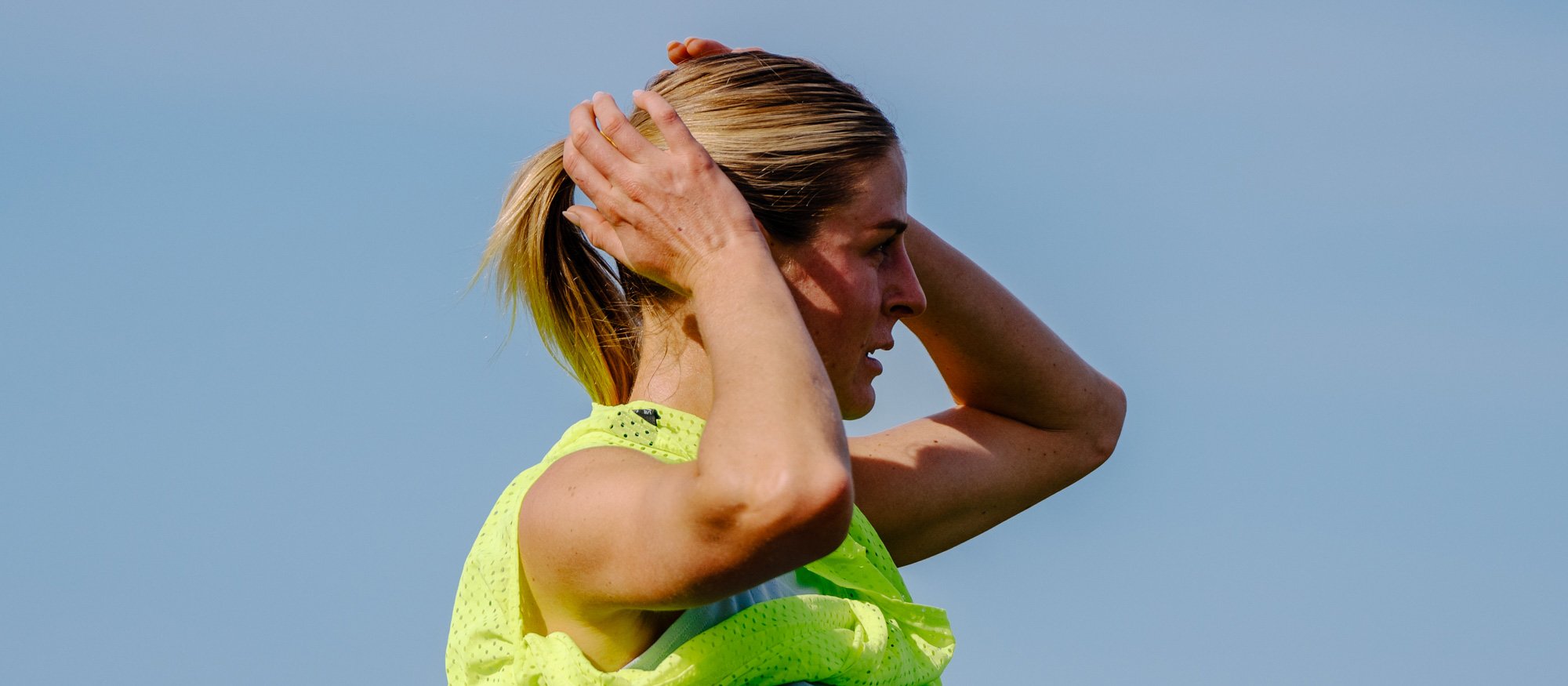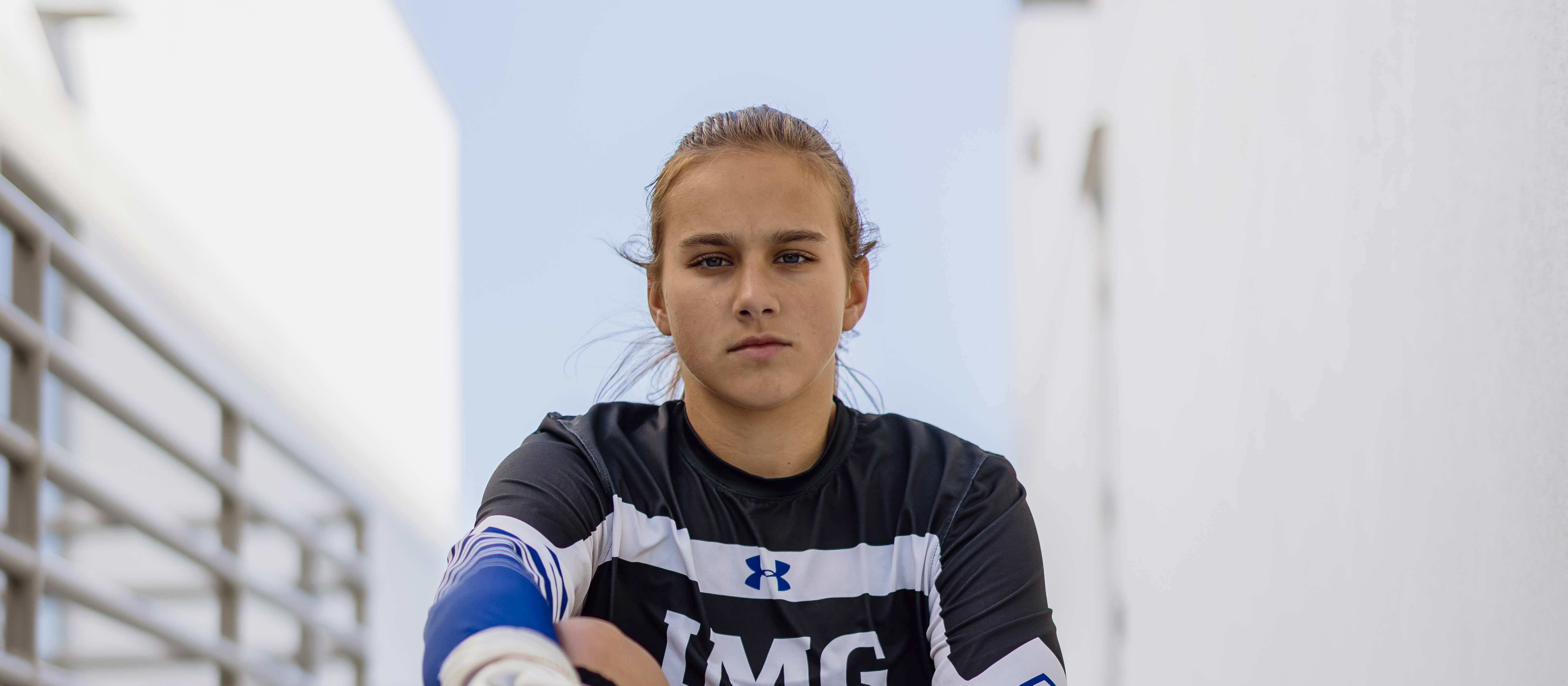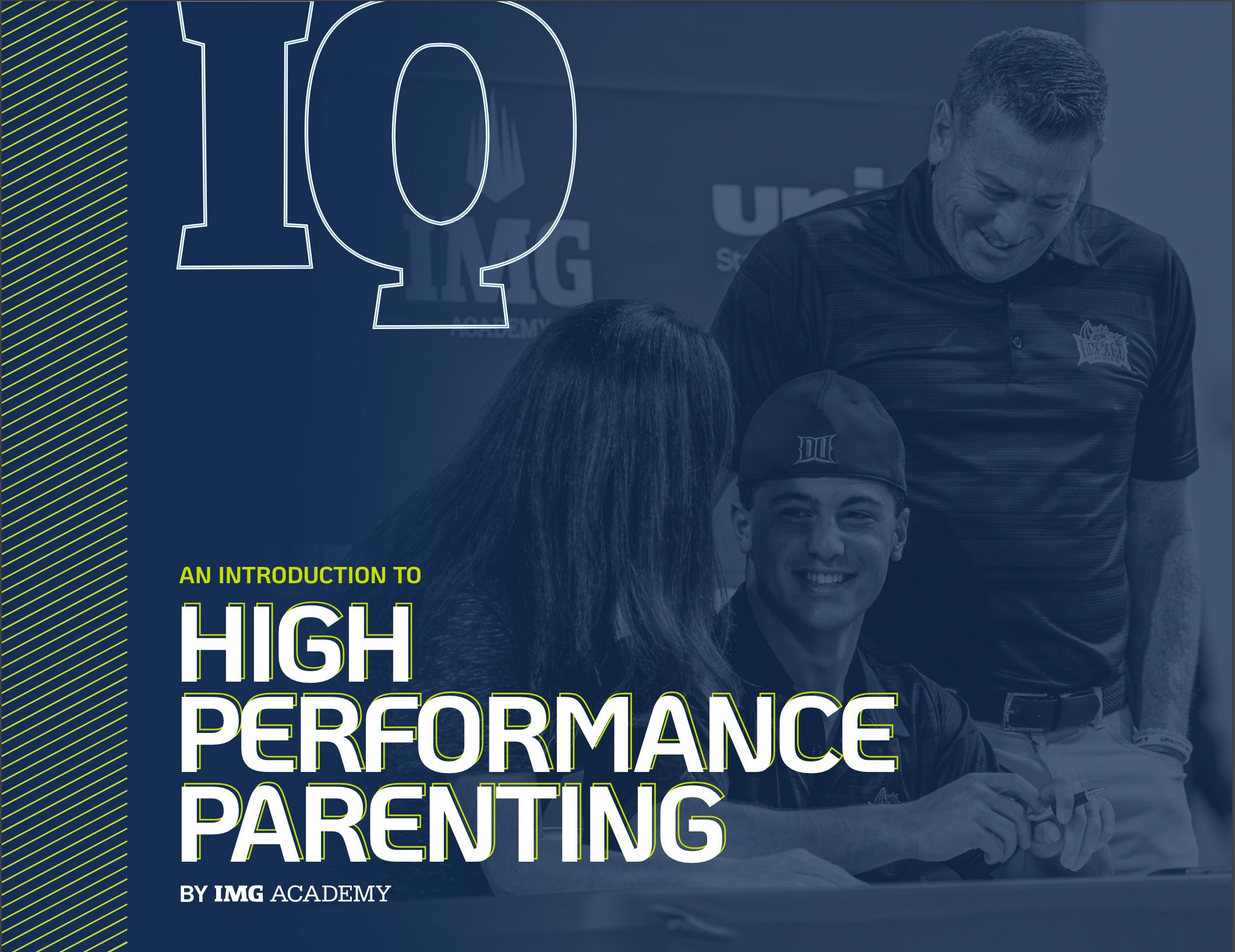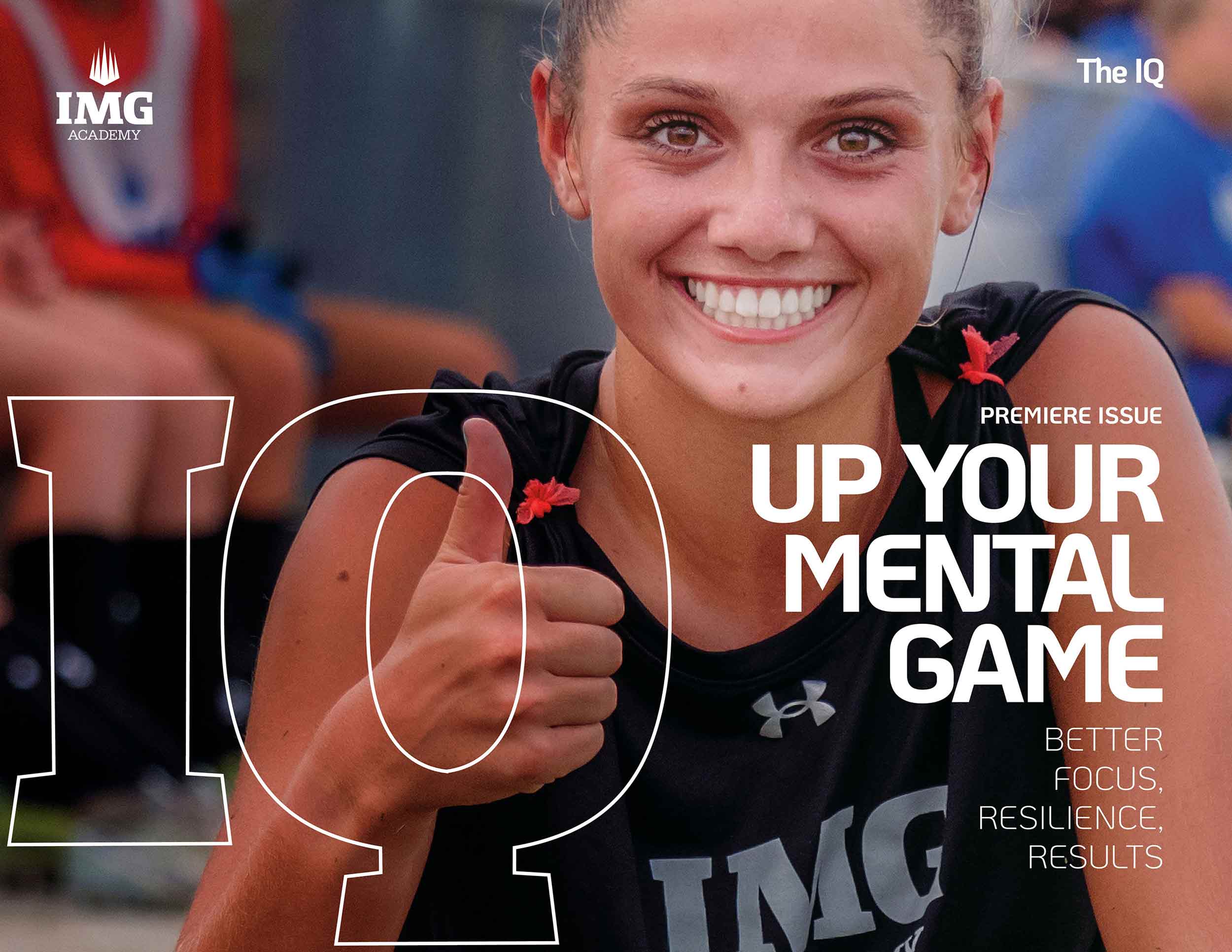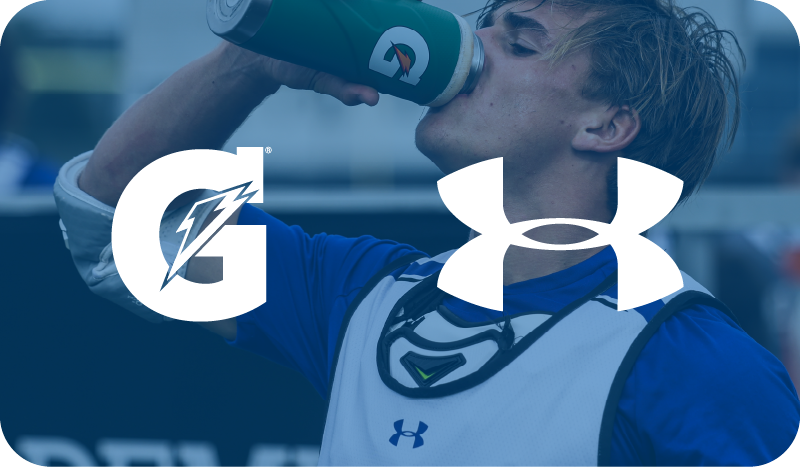To give a clutch performance, student-athletes need to know what it is — and what it’s not.
“Often people think that a clutch performance means you’re increasing your performance like you’ve never played before,” says Jamie Nielson, a mental performance coach with IMG Academy. “All of a sudden you’re scoring 20 more points or something like that.” But that’s not exactly what it is.
Instead, a clutch performance is defined by pressure, and how an athlete handles it.
“It’s about being able to play to your best potential during pressure-filled moments or important moments. It’s about not having a dip when there’s something on the line,” Nielson says, noting that it can also be about increasing performance, though that’s not necessarily the goal.
Pressure tends to come from four sources, Nielsen says: time, space, difficulty, and importance. If there’s one minute left in a soccer match, that’s a time pressure; feeling a competitor sidle up behind you in the 200-meter sprint is a space pressure; taking a particularly tricky shot in a basketball game is a difficulty pressure; knowing you’re being watched by the college scout of a dream school is an importance pressure.
There are ways for student-athletes to prepare for these clutch moments — and for them to reframe pressure into something positive. The first step? Awareness. [H2] Clutch Performance Tip #1: Pinpoint Your Awareness Student-athletes are used to being focused. The question is whether they’re focused on the right things. Zeroing in on factors that can’t be controlled — an opponent’s attitude, the crowd, a high-profile scout — drains focus from where it needs to be to perform through pressure. Controlling the controllables sets up the athlete for success.
“Often in pressure situations, our focus will narrow in on things that are unhelpful,” Nielson says. “Are you able to switch your focus to the most important thing at the most important time and stay in that present moment? That’s valuable in a clutch performance.”
Nielson points to her own experience playing college basketball as an example of what not to do. Back then, when opponents would put on a full court press, sometimes she didn’t want to be involved, preferring to stay further down the court. “I really didn’t want the ball,” she says. “Becoming a mental performance coach led me to understand how unhelpful that thought process was — I had the ability to perform, but I was second-guessing my ability to make the right decision.” Learning earlier about her reactions in a clutch moment — and learning that she was particularly sensitive to space pressure from opponents — may have helped her harness the court skills she’d been working on over the years. [H2] Clutch Performance Tip #2: Add Pressure to Your Practice Practice can be more than just rehearsing physical skills. It can be an opportunity to get better at handling pressure.
“We want to make our practices as close to the performance as we can,” Nielson says. “Obviously it’s difficult to just be like, ‘Oh, this is the championship game’ in practice. But can you work on performing under pressure? Can you work with making shots when someone’s hand is in your face, or when you’ve had a good game but you’re at 24-25 and it’s game point? Being able to work on experiencing that pressure and learning how to perform is what we want.”
Mental performance, including coming through in the clutch, is a skill student-athletes can build. “One of the biggest things is understanding that you can get better at things like this,” Nielson says. “It’s not that some people have it and others don’t. You can learn how to get your body into the zone that you want it to be in for these moments.”
Clutch Performance Tip #3: Make Your Plan
Once student-athletes have built awareness and practiced under pressure, they need a plan for how to approach the real deal.“What’s the most important thing that you can do in that moment to help you perform?” Nielson asks, noting that the answer varies from person to person. Developing more helpful self-talk, taking a deliberate breath, zeroing in on the controllables — whatever your plan is, training the mind to turn to it in clutch moments can help an athlete deliver.
Given that student-athletes are already focused on their bodies, many focus plans involve physicality. “We might come up with a plan of taking a deep breath before a free throw, or right before tipoff,” Nielson says. “If you feel that pressure physically, you can respond to it physically.”
That includes keeping an eye on pace. “In pressure situations, we speed up,” Nielson says. “So intentionally slowing down, taking that time to go through your routine, to take that deep breath, to shift your focus to where you want it to be — that can help you stick with your fundamentals.”
The Clutch Isn’t Just a Performance—It’s a Perspective
Preparing for a clutch performance is key — and shifting one’s perspective around it can help. Approach mental performance with a growth mindset of, “This is something I can improve.”“A lot of people view pressure as a challenge or a threat,” Nielson says. “And with challenge comes opportunity.” She encourages student-athletes to acknowledge the changes that pressure brings to their physicality — butterflies in the stomach, heightened perspiration, the jitters — not as signs of negative pressure, but as the body’s way of gearing up for a clutch performance.
She turns to Billie Jean King’s famous statement that pressure is a privilege. “If you’re playing at a high level, you’re going to experience pressure,” Nielson says. “You’re feeling pressure because you care about this, because this is important to you. So if you’re constantly trying to get away from that instead of accepting that the pressure is going to be there and that your mind is going to do things and your body is going to do things in response to pressure, you’re stuck — because you’re never going to get rid of it.”
Learning what pressure looks like and how to respond to it helpfully goes beyond the game. A clutch performance on the job or in an intense personal situation won’t land an athlete on the front page of the sports section, but that doesn’t mean it matters less.
“Your sport ends,” Nielson says. “But these lessons and tools go with athletes into life. When they’re experiencing a pressure — a deadline, with family, in a relationship — using these skills will help you be able to navigate your life more effectively.”
Ready to learn how you perform in the clutch? Take IMG Academy’s on-demand focus course.



